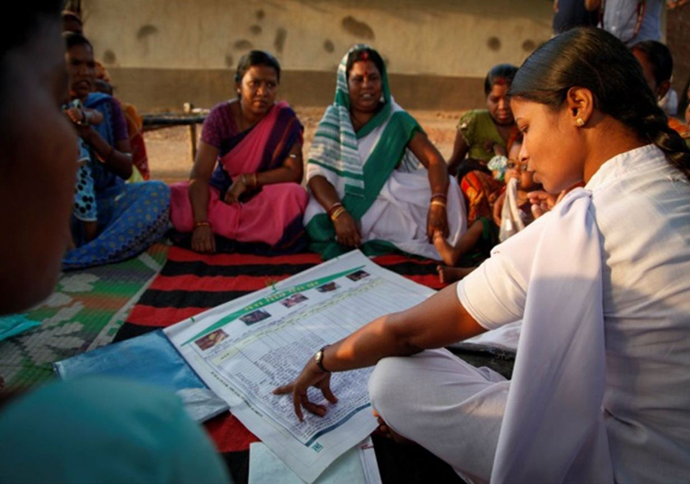(This post originally appeared on USAID’s Impact blog.)
In Chandradeepa, a remote village in eastern India, Esther Das works as an auxiliary nurse midwife tending to the primary health care needs of the community. For almost a decade, she has been playing a key role in making sure pregnant women and children in her village receive routine, life-saving vaccinations.
To keep track of which child has received which vaccine, she has been using a tool called “My Village My Home.” The tool is easy to construct – Esther draws the frame of a house on a piece of paper. After conducting a headcount, she draws a “plank” at the foundation of the house for each child in the village, with the oldest children at base of the house. When a dose of vaccine is administered to a child, Esther shades in their plank to make a solid brick.
“By using the tool, I am able to count all the [children] in my community with their immunization status on a single chart,” she said.
Just as more bricks make the foundation of a real home strong, more vaccinated children make Esther’s village healthier. By using the illustration of a house, Esther is able to easily identify unvaccinated children. To ensure the health of the village, every child needs to receive all recommended vaccinations, the same way every brick in the foundation of the house needs to be in place.
The diligence of community workers around the world like Esther in keeping track of childhood immunizations is critical to helping people live long and healthy lives. This week is World Immunization Week, and according to the World Health Organization progress toward global vaccination targets for 2015 is far off track. One in five children worldwide are not being vaccinated for preventable diseases.
USAID is supporting efforts to solve this problem. In 2011, the Maternal and Child Health Integrated Program — the predecessor to USAID’s flagship Maternal and Child Survival Program — introduced the “My Village My Home” tool in 28 public health care centers in Jamtara and Deoghar districts in Jharkhand state in eastern India to capture and track the immunization status of all children in those villages up to their second birthday.
The Anganwadi center, or health care center, in every village posts a copy of the hand-drawn house tool prominently in public. As an easy to understand illustration, the tool allows parents to track their children’s immunization progress compared with other children in the community.
During the study, the “My Village My Home” tool significantly increased the number of children who received vaccines — only 1.9 percent of eligible children in the participating villages did not receive the necessary vaccinations.
The program’s successful outcome combined with advocacy by the Maternal and Child Health Integrated Program encouraged the government of Jharkhand to implement the tool across all vaccination sites in the state.
Successful efforts like the “My Village My Home” tool are helping USAID work toward our mission of ending extreme poverty.

